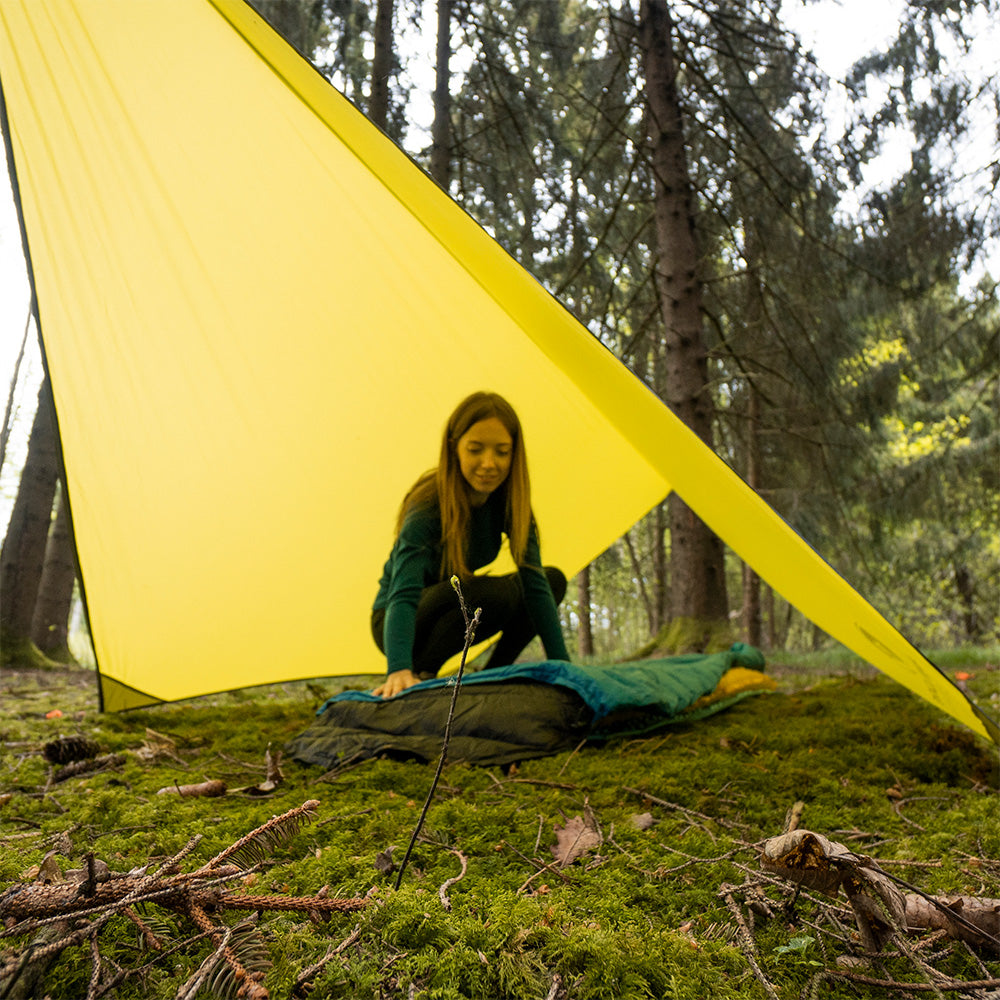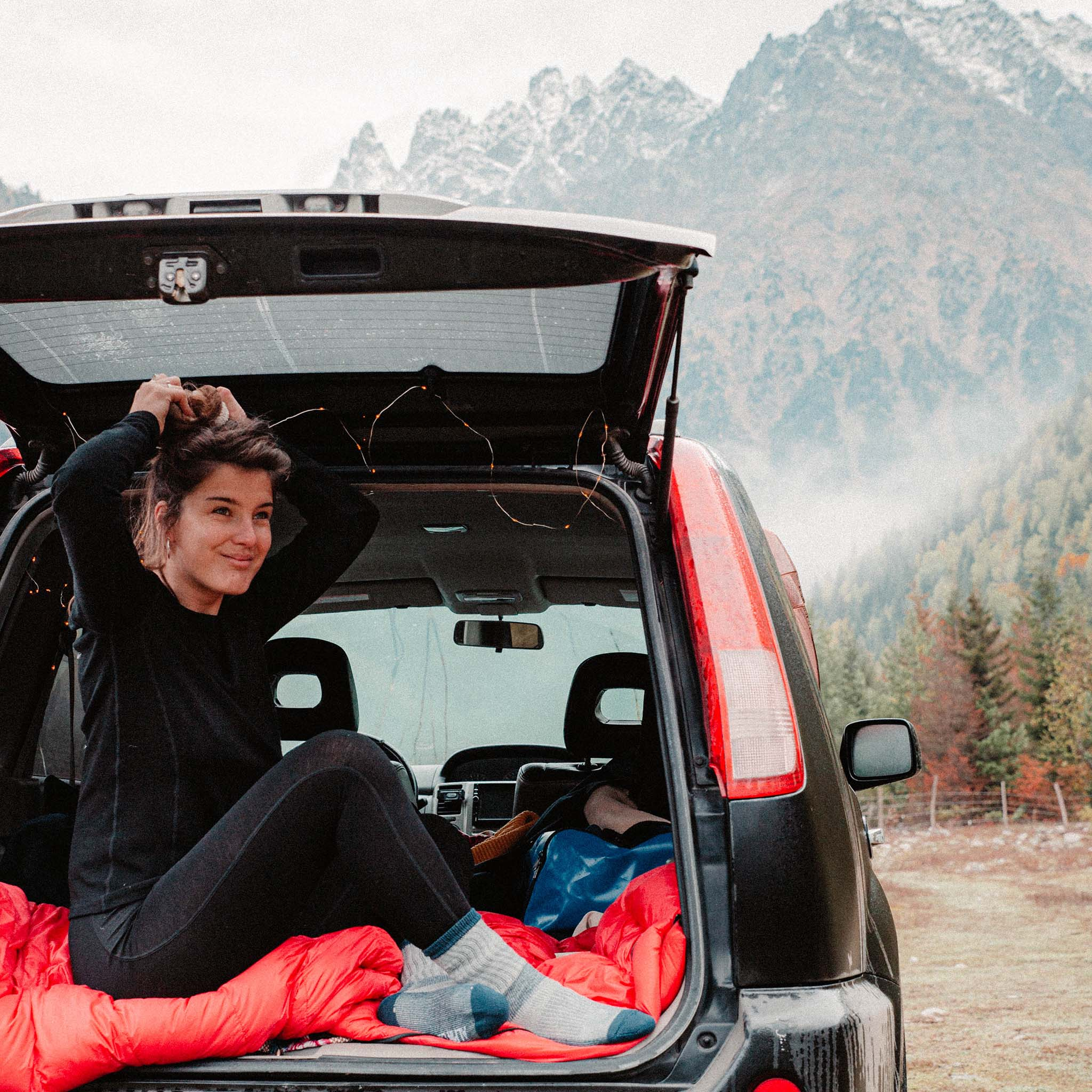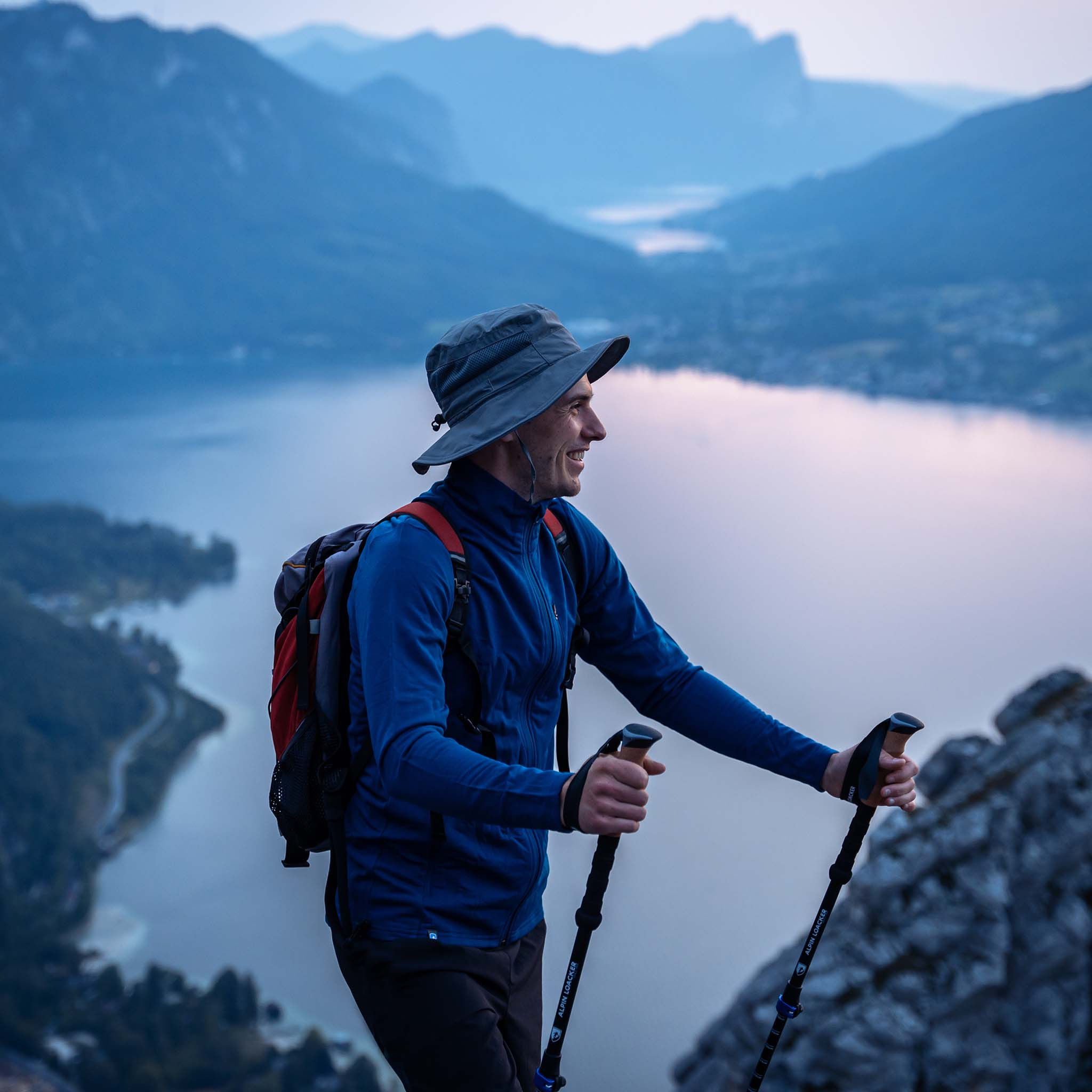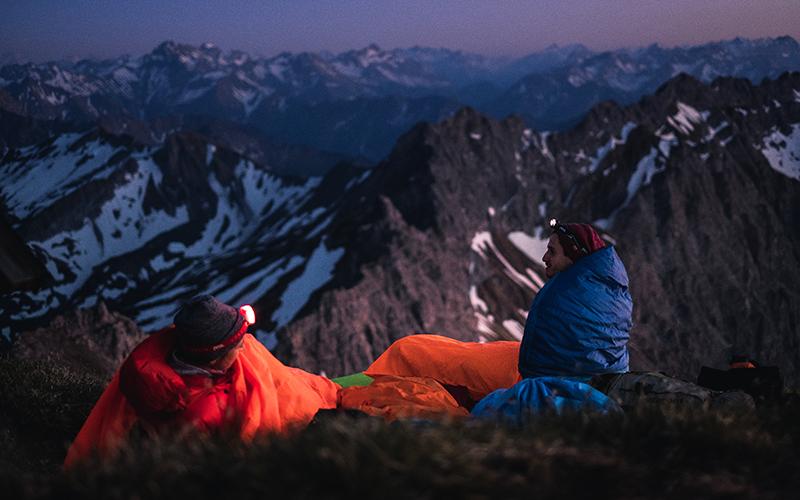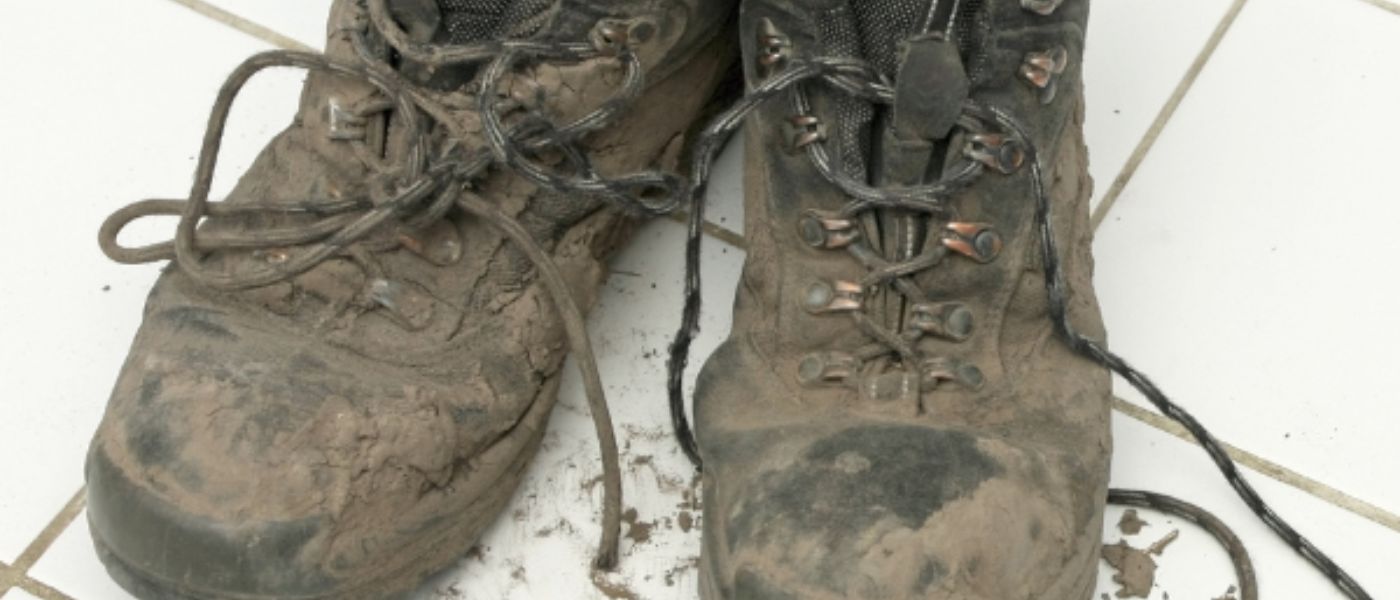12. August 2022
Ultra Leicht Equipment Guide:Was brauche ich unbedingt für eine mehrtägige Wanderung?
Packliste Wandern

Die wichtigste Frage: Was muss unbedingt mit auf die Reise? In diesem Guide erkläre ich Dir, welches Outdoor Equipment unverzichtbar ist und unbedingt auf Deiner Checkliste stehen sollte.
Wir behandeln das Thema Packliste anhand verschiedener Übernachtungsmöglichkeiten und Mehrtagestouren zu Fuß. Es macht einen großen Unterschied, ob Du während einer mehrtägigen Wanderung in einer Herberge oder in Deinem selbst mitgebrachten Zelt schläfst.
Vorweg werde ich die einzelnen Gegenstände der Packliste genauer erläutern und alle Produkte auflisten. Diese Outdoor Checkliste ist in weiten Teilen Europas anwendbar und darüber hinaus. Ich werde näher auf die einzelnen Produkte eingehen, damit Du verstehst, weshalb Du gerade dieses Produkt für Deine Trekking Checkliste wählen solltest. Gleichzeitig werde ich aber auch Alternativen aufzeigen.
Zuletzt verraten wir unsere Outdoor Hacks. Wir statten Dich mit den besten Tipps & Tricks für Dein Abenteuer aus.
Inhaltsverzeichnis
- 1. Alle Produkte im Überblick:
Ultraleichte Must-Haves
fürs Wandern - a. Big 4
- b. Bekleidung
- c. Equipment
- d. Hygiene
- e. Reiseapotheke
- f. Zusätzliche Ausrüstung:
Elektro Kramm - 2. Die gesamte Packliste im Überblick:
Packliste Wandern:
Was brauche ich für den
Wanderurlaub? - a. Packliste Wandern mit Zelt
oder Tarp - b. Packliste Wandern mit
Übernachtung - 3. Diese Outdoor Hacks werden Deine
neuen Life Hacks: Tipps & Tricks
für Dein Abenteuer um Deine
Wanderung noch leichter zu machen - 4. Schlusswort: Keep it simple
Eine wichtige Anmerkung gleich zu Beginn: Wenn Du alles selber tragen musst, macht es keinen Unterschied, ob du 3 oder 7 Tage unterwegs bist. Du wirst sehen, dein Rucksack wird ziemlich schnell voll sein und Wandern macht nur halb so viel Spaß, wenn Du dich wie ein Packesel fühlst.
1. Alle Produkte im Überblick: Must-Haves fürs Wandern

a. Die Big 4
Das Ziel von ultraleichtem Backpacking und Bike Backpacking ist es, das Gewicht der Ausrüstung zu reduzieren, die wir auf Rucksack- und Fahrradtouren mit uns tragen, ohne dabei auf Komfort und Sicherheit zu verzichten. Das Gewicht Deiner Ausrüstung kannst Du in der Regel am stärksten reduzieren, wenn Du Dich auf die vier schwersten Gegenstände Deiner Ausrüstung konzentrierst, die sogenannten Big 4.
Dazu zählen:
Rucksack
Zelt, Tarp und Hängematte
Schlafsack
Schlafmatte
Rucksack
Verwende einen leichten und wasserdichten Rucksack. Zusätzlich sollte das Material des Rucksacks reißfest sein. Es gibt viele günstige, leichtere Rucksäcke, die aber bei Reibung schnell abgenutzt sind und besonders bei den Nähten aufgehen. Beim Rucksack solltest Du nicht sparen, da er all Dein Equipment beinhaltet und angenehm und schmerzfrei an Deinem Körper sitzen sollte.
Zelt, Tarp und Hängematte
Übernachtest Du draußen und möchtest wirklich die leichteste Outdoor-Ausrüstung dabei haben, solltest Du ein Tarp oder eine Hängematte verwenden. Mittlerweile gibt es ultraleichte Hängematten und in Kombination mit einem Tarp sind sie oft noch leichter als ein Zelt. Ein Tarp kannst Du von Frühling bis Herbst verwenden, und wenn Du abgehärtet bist, sogar im Winter. Die Vorteile eines Tarps gegenüber einem Zelt wirst Du deutlich spüren. Es braucht deutlich weniger Platz und wiegt je nachdem etwa ein Drittel eines Zeltes.

Um das Gewicht gering zu halten, sind Tarp und Hängematte eine gute Kombi.
Schlafsack/Hüttenschlafsack
Sobald Du in einer Hütte schläfst, brauchst Du einen Schlafsack, aber in der Regel keine Isomatte. Es kann vorkommen, ist aber sehr selten, dass es in manchen Selbstversorger Hütten keine Matratzen gibt und Du zusätzlich eine Isomatte brauchst.
Die leichteren und wärmeren Hüttenschlafsäcke sind mit Daunen gefüllt. Wenig Gewicht, aber nicht isolierend ist der Hüttenschlafsack aus Seide. Wenn Du in einem Zelt oder Tarp übernachtest, solltest Du auf einen Daunenschlafsack zurückgreifen. Wenn Du näheres über Hüttenschlafsäcke wissen möchtest, lies dazu unseren Blogbeitrag über “ALLES WAS DU ÜBER HÜTTENSCHLAFSÄCKE UND INLETT WISSEN MUSST!''
Isomatte
Vorweg, Schaumstoffmatten und aufblasbare Isomatten gehören in die Kategorie der leichtesten Schlafmatten.
Für einen Trekking Trip, auf dem Gewicht und Platz entscheidend ist, solltest Du aber eine aufblasbare Isomatte verwenden. In dieser Kategorie gibt es ultraleichte Produkte, die auch ein sehr kleines Packmaß haben.
Wir haben einen ausführlichen Ratgeber über Isomatten, wenn Du noch mehr Informationen über die unterschiedlichen Arten von Schlafmatten wissen möchtest: “ISOMATTEN RATGEBER''. WELCHE ISOMATTE IST EMPFEHLENSWERT?
b. Bekleidung
Die Outdoor Kleidung werde ich mit genauer Stückzahl angeben. Auf unserer Ultraleicht Packliste steht wirklich nur, was Du wirklich brauchst. Du kannst die Stückzahl natürlich erhöhen und Deinen individuellen Bedürfnissen anpassen. Oft ist es aber so, dass wir zu viel mitnehmen. Da unser Blogbeitrag auf Ultra Light Equipment ausgelegt ist, soll es wirklich nur minimal und das nötigste sein, was Du brauchst.
Gerade wenn man nur sehr wenig mitnehmen kann, macht es Sinn, dass die mitgebrachten Gegenstände gut überlegt sind. Was für ein Material, wie viel wiegt es, wie fühlt es sich bei konstantem Gebrauch an und wie lange braucht es, um zu trocknen?
Unterwäsche
Hier ist es Sinnvoll Unterwäsche aus Merino Wolle zu tragen. Der Beckenbodenbereich und die Oberschenkel sind im Normalfall nicht gut belüftet. In der Gegend sammelt sich viel Schweiß an und es gibt viel Reibung. Merinowolle nimmt Feuchtigkeit sehr gut auf, ohne gleich zu müffeln. Synthetische Fasern haben eine glatte Oberfläche, an der sich Bakterien besser halten können, weshalb sie schneller riechen.
Die getragene Unterwäsche aus Wolle kann am Abend von Hand gewaschen werden, während die Saubere zum Schlafen benutzt wird. Wenn Deine Unterwäsche über Nacht nicht trocknet, kannst du sie während des Gehens auf Deinem Rucksack befestigen. Im Notfall die Unterhose einfach umdrehen. Wem das zuwenig ist, kann noch eine dritte Boxershort einpacken, damit man auf alle Fälle immer ein Sauberes Höschen zum schlafen parat hat.
Anzahl: 2 x Unterwäsche aus Merino (gegebenenfalls auch drei)
Sport-BH
Zwei Stück Sport BHs reichen auch hier in der Regel völlig aus. Merinowolle oder andere Hautfreundliche Stoffe wie 100 % Baumwolle sind im Gegensatz zur Synthetik optimal für die Haut. Wenn Du jeden Tag Reibungen in Kombi mit Schweiß ausgesetzt bist, wird es Dir Deine Brust und Dein Dekolletee danken.
Anzahl: 2 x
Leggins, Lange Wollunterhose
Ich muss zugeben, das ist mein liebstes Teil. Ich verwende sie als Jogginghosen-Ersatz auf der Hütte und zum Schlafen, da ich schnell friere. Es ist nicht verkehrt, vor allem in höheren Lagen im Frühjahr und Herbst eine lange Unterhose mitzunehmen.
Anzahl: 1 x
T-shirt
Mit dem T-Shirt kann man es wie mit der Unterwäsche halten. Eines trägst du während des Tages und das Saubere benutzt du zum Schlafen. Bei Bedarf wäscht du das Merinoshirt von Hand aus.
Weshalb Merinowolle und nicht Synthetik?
Synthetik fängt sehr schnell an, unangenehm zu riechen. Wenn man viel schwitzt und mehrere Tage unterwegs ist, wird der Geruch nicht besser. Eines der Vorteile von Merinowolle ist die selbstreinigende Faser.
Auch in puncto Tragegefühl ist Merinowolle um einiges angenehmer. Synthetik ‘klebt’ an der Haut. Merino kühlt, wenn es warm ist und wärmt, wenn es kühl ist. Wenn Du mehr über die positiven Eigenschaften von Merinowolle wissen möchtest, lies unseren Blogbeitrag: Merinowolle - die Hightech Faser aus der Natur.
Anzahl: 2 x
Wanderhose
Eine schnell trocknende Hose findest du in der Softshellhose. Sie ist leicht und schützt dich vor Sonne, Kälte und Nässe. Eine leichte lockere Wanderhose kannst Du hochkrempeln, somit ersparst Du dir zusätzlich die kurze Hose. Eine Alternative wäre die Zip-Hose.
Anzahl: 1 x

Eine Softshell Wanderhose ist beweglich und bequem. Außerdem ist sie winddicht und wasserabweisend.
Hardshelljacke (Regenjacke)
Eine Shelljacke solltest Du fast immer dabei haben. Sie dient dir als Regen- und Windschutz. Zusätzlich kannst du sie als Sitzunterlage für feuchten Boden verwenden. In Gegenden, in denen es sehr heiß und schwül ist, kannst Du auf eine Hardshelljacke verzichten, auch falls es einmal regnen sollte, bleibt es trotzdem warm, und ein Regenhut reicht aus, damit Dein Kopf trocken bleibt. In schwülen und heißen Regionen, wäre ein langes Shirt oder Hemd besser geeignet, um zusätzlich Deine Haut vor der Sonne zu schützen.
Anzahl: 1 x
Daunenjacke
Dünne Daunenjacken sind leicht und brauchen nicht viel Platz. Wenn man sie in der Nacht nicht zum Schlafen tragen muss, können sie auch als Kopfkissen verwendet werden. Gerade am Abend wird es in den Bergen meist kühl, kombiniert mit einem langen Wollshirt oder Merino Pullover ist sie eine noch wärmere Kombi.
Anzahl: 1 x
Merino Longsleeve
Ein dünnes langärmliges Shirt schützt dich vor Kälte und bei Bedarf auch vor Sonne. Im Gebirge bzw. in der Höhe ist die Sonne sehr stark. Ab einem gewissen Zeitpunkt hilft Sonnencreme nichts mehr und Du bekommst einen Sonnenbrand. Bei Geruch lässt sich ein Merino-Shirt sehr einfach mit Wasser auswaschen. Da wir das Gewicht so gering wie möglich halten wollen, reicht ein Stück langarm Shirt völlig aus.
Anzahl: 1 x
Dickere Fleecejacke oder Merinojacke
Am Abend, wenn es kühler wird, reicht eine Daunenjacke oft nicht mehr aus. Wenn Du im Freien übernachtest, wirst Du mit Deiner ‘normalen’ Daunenjacke frieren. Deshalb kombiniert man Daunen Jacken entweder mit einer dickeren Fleece Jacke, mit einer Merino Jacke oder einer Primaloft Jacke. Da Du nur wenig Platz hast, macht es keinen Sinn, eine Daunenjacke mitzunehmen, die ein Viertel oder sogar die Hälfte des Rucksacks belegen würde. Es ist ein Unterschied, ob du in den Bergen bist oder mit dem Fahrrad unterwegs und in einer Pension übernachtest. In den Bergen ist es unbedingt empfehlenswert, warme Kleidung dabei zu haben.
Anzahl: 1 x (in den Bergen und kalten Jahreszeiten)
Sonnen- bzw. Regenhut
Grundsätzlich sind Sonnentage äußerst positiv! Wenn aber die Sonne in den Bergen vom Himmel knallt, kann es auch mal unangenehm mit Sonnenbrand und im schlimmsten Fall Sonnenstich werden. Dagegen hilft am besten ein guter Sonnenhut. Ich verwende einen bequemen Hut, den ich als Sonnen- und Regenhut verwenden kann.

In den Bergen ist die Sonne noch intensiver wie im Tal.
Wollmütze
Ob Du eine warme Kopfbedeckung brauchst, hängt sehr von der Wetterlage und dem entsprechenden Gebiet ab. In höheren Lagen und im Norden solltest Du sie auf alle Fälle dabei haben. Im Herbst ist es in der Nacht schon wieder recht kalt. Eigentlich brauchst Du sie fast immer, außer im Hochsommer, wenn die Sonne auf Dein Haupt knallt und Du dir wünscht, eine kuschelige Merino Mütze tragen zu können. Eine dünne Merino Mütze passt auch noch unter einen Kletterhelm, wenn es doch frischer werden sollte.

Eine 2 Layer Merino Mütze hält dich warm und trägt nicht dick auf. Sie passt sogar unter Deinen Helm.
Buffer (Schal)
Der Vorteil eines Buffer ist, dass er als Schal und als Stirnband verwendet werden kann. Er braucht nicht viel Platz und auch unter dem Helm kann er getragen werden.
Sonnenbrille
Auch die Augen sollten vor direkter UV-Strahlung geschützt werden. Das gilt vor allem beim Wandern, denn hier ist mit einer verstärkten Sonneneinstrahlung und einer zusätzlichen Reflexion zu rechnen, die langfristige Schäden am Auge verursachen können. Schnee reflektiert bis zu 95 Prozent des Lichtes, weshalb bei einer Wintertour die Sonnenbrille in jedem Fall dazugehört.
Socken
Liebe Bergfreunde, auch hier greifen wir zu Socken aus Merinowolle zurück. Die absorbierende Faser bindet die Feuchtigkeit und leitet sie von der Haut weg, so dass die Haut lange trocken bleibt und kein Nässegefühl entsteht wie bei Socken aus Baumwolle, Synthetik oder normaler Schafwolle. Dank der tollen Eigenschaften der Merinowolle reichen zwei Paar Socken für einen mehrtägige Tour völlig aus. Wenns dann doch unangenehm riechen sollte, mit Wasser und etwas Seife auswaschen.
Anzahl: 2 Paar
Handschuhe
Die wenigsten denken an Handschuhe, Du wirst sie aber schneller brauchen, als Du dir gerade vorstellen magst. Hände sind im Gegenzug zu anderen Körperpartien ungeschützt. Deshalb ist es empfehlenswert, nicht nur bei Sommer-, sondern auch auf Bergtouren stets ein Paar Handschuhe dabei zu haben. Denn gerade im Gebirge kann es zu plötzlichen Wetter Stürzen kommen. Für Klettersteiggeher*innen gehören entsprechende Handschuhe ohnehin zur Pflichtausstattung. Sie bieten Schutz vor Drähten, die aus dem Stahlseil herausragen und verhindern Blasen an den Händen.
Je nach Einsatzgebiet empfiehlt sich im Gebirge auch bei warmen Temperaturen das Mitführen von Handschuhen mit leichter Isolation. Gerade auf Touren in hochalpinen Regionen, werden leicht Höhenbereiche erreicht, in denen die Temperatur markant unter dem sommerlichen Niveau im Tal liegt.
Mittlerweile gibt es leichte und gleichzeitig warme Handschuhe, mit denen man sein Smartphone bedienen kann, ohne sie auszuziehen.
Wanderschuhe
Wandern: Halbschuhe oder richtige Wanderstiefel. Das hängt zum einen von den individuellen Bedürfnissen ab und zum anderen vom Wandergebiet. Wenn Du Gletscher überschreitest, müssen Deine Wanderschuhe steigeisenfest sein. Joggingschuhe oder Halbschuhe sind dies meistens nicht. Der Nachteil von Halbschuhen ist, dass die Füße schneller ermüden. Das Fußgelenk muss mehr arbeiten, weil es nicht geschützt ist.
Flip Flop oder Sandalen
Damit die Füße etwas Abwechslung haben und auch mal durchatmen können, sollte man ein zweites Paar Schuhe mitnehmen. Vor allem aus hygienischen Gründen sind Flip Flop praktisch, denn diese kann man auch noch zum Duschen verwenden.
c. Equipment
Faltbare Wanderstöcke
Hast Du immer schon Wanderstöcke benutzt? Dann nimm sie auch auf Deiner Mehrtagestour mit. Die leichtesten Wanderstöcke sind aus Carbon und lassen sich zusammenfalten. Wenn Du Dich in das Thema gerne einlesen möchtest und ob es für Dich evtl. Sinn macht, faltbare Wanderstöcke zu verwenden, kannst Du in unserem Blogbeitrag “Alles, was du über Wanderstöcke wissen solltest. Ratschläge über Wanderstöcke aus der Praxis”, nachlesen.

Faltstöcke zum Wandern brauchen nicht viel Platz und entlasten Deine Gelenke.
Stirnlampe (Taschenlampe)
Nicht nur wer im Freien oder im Zelt übernachtet, sollte eine Stirnlampe dabei haben. Es kann passieren, dass man von der Dunkelheit überrascht wird, weil die Route falsch eingeschätzt wurde. Wer keine mitnehmen möchte, kann auch sein Smartphone verwenden.
Ultraleichter Gaskocher, Feuerzeug oder Zünder
Wenn Du draußen übernachtest und einen Gaskocher dabei hast, ist einer der grundlegendsten Punkte, dass das Kochsystem einfach zu bedienen ist. Es soll so simpel wie möglich in der Anwendung sein. Der zweite Punkt ist natürlich das Gewicht. Ein leichter Gaskocher hat in etwa ein Gewicht von 200 - 400 Gramm inklusive kleiner Tasse oder Topf, in dem das Wasser gekocht werden kann. Auf dem Markt gibt es unzählige Outdoor-Zünder. Wer sich Überlebensstrategien aneignen möchte, kann auch einen Feuerstahl* mitnehmen. Es ist klein und passt in jede Tasche. Bitte vorher üben! Gegen ein altherkömmliches Feuerzeug oder Zünder spricht auch nichts.
* Was ist Feuerstahl?
Feuerstahl oder Feuereisen besteht aus einem kohlenstoffreichen Stahl und ist ein Bestandteil des Schlagfeuerzeugs. Es dient dazu, schnell und einfach Funken zu entzünden, um Feuer zu machen.
Titan Besteck
Wir geben auf unserer Packliste explizit Titan-Besteck an, weil es sehr robust und zugleich unglaublich leicht ist. Titan ist hart und hat gleichzeitig eine geringe Dichte. Diese Vorteile machen Titanbesteck eindeutig zum Gewinner gegenüber anderen Produkten. Es ist ein Material, auf das man sich verlassen kann. Hochqualitatives Plastik wäre evtl. eine Alternative. Plastik kommt aber vergleichsweise trotzdem nicht an die Härte und Langlebigkeit von Titan ran und zweitens ist es, nun ja, Plastik. Der Umwelt zuliebe sollten wir, soweit es geht, darauf verzichten.

Dreier Set Titan Besteck
Wasserflasche
Auch die Wasserflasche sollte aus einem umweltfreundlichen, leichten und robusten Material sein. Hier empfiehlt sich auch Titan oder eine Wasserflasche aus Edelstahl. Edelstahl ist um einiges günstiger als Titan, aber bei weitem nicht so robust wie Titan. Für den alltäglichen Gebrauch eignet sich Glas hervorragend, für eine mehrtägige Reise und im Outdoor Bereich ist Glas jedoch zu schwer und es kann gefährlich werden, wenn Glas bricht.
Anzahl: 1-2 Flaschen
Wasserfilter
Outdoor Wasserfilter ermöglichen es, Schmutzpartikel, Schwebstoffe und Krankheitserreger, dazu zählen Viren und Bakterien aus dem Wasser erfolgreich herausfiltern. Es gibt unterschiedliche Filtersysteme. Welches Du benötigst, hängt von Deinem Reiseziel ab. Beispielsweise entfernt der Aktivkohle-Filter, den es auch als Aufsatz gibt, Schwermetalle wie auch organische Verbindungen aus dem Wasser.
Es gibt folgende Wasserfilter:
1. Kompakte Mechanische Filter
(Bakterien, Protozoen)
2. Pumpfilter (Bakterien, Protozoen)
3. Pumpenfilter gegen Viren
(Bakterien, Protozoen, Viren)
4. Elektroadsorption (Bakterien, Protozoen, Viren)
5. Abkochen (Bakterien, Protozoen, Viren)
6. UV-Licht (Bakterien, Protozoen, Viren)
7. Chemische Mittel (Bakterien, Protozoen, Viren)
8. Durchlauffilter (Bakterien, Protozoen)
9. Als Aufsatz: Aktivkohlefilter
In unseren Breitengraden reicht normalerweise ein einfacher mechanischer Wasserfilter. Wer aber Viren filtern möchte, braucht einen speziellen Pumpfilter gegen Viren.
Wichtig: Achte darauf, Wasser aus Quellen zu trinken, die direkt aus dem Berg fließen. In trockenen Gebieten, wie den Pyrenäen, gibt es viele tote Tierkadaver, die das Wasser verseuchen können. Dies sieht man aber oft nicht.

Einfaches Pumpfilter System
Messer bzw. Taschenmesser
Ein Messer ist ein universelles Werkzeug und kann für viele Dinge zweckentfremdet werden. Es eignet sich für Reparaturen, um Feuer zu machen und Holz zu spalten. Wenn man sich in einer länger anhaltenden Notlage befindet, kann ein Messer überlebensnotwendig sein.
Biwak (Rettungsdecke)
Der Biwak sorgt bei widrigem Wetter für Wind- und Regenschutz und verhindert, dass der Schlafsack bei Regen und/oder Tau feucht wird und an Wärmeleistung einbüßt. Wer mit Zelt oder Tarp unterwegs ist, sollte einen Not Biwak dabei haben. Mittlerweile gibt es sehr kleine und leichte Notfalldecken. Wenn man zu zweit reist, gibt es auch spezielle Biwaksäcke für 2 Personen, dadurch erspart man sich etwas an Gewicht und Stauraum.

Ein kleiner und leichter Biwaksack gehört zur Standardausrüstung in jede Outdoor Reisetasche. Auch wenn die Tour kurz ist, kann ein Notfall eintreten, der zumindest das Warten auf Rettung nach sich zieht. Der Biwaksack, der wind- und wasserabweisend ist, bietet dann auf jeden Fall Schutz vor Auskühlung und ein gewisses Maß an Geborgenheit.
d. Hygiene
Mikrofaser Handtuch
Für unsere Ultralight Equipment Checkliste sind Mikrofaser Handtücher besonders geeignet, weil sie schnelltrocknend, antibakteriell, klein, leicht und eine gute Feuchtigkeitsaufnahme haben.
Zahnbürste
Wer Platz sparen möchte, verwendet eine Kinderzahnbürste oder schneidet die Zahnbürste in der Mitte auseinander.
Zahncreme oder Zahntabs
Ich erwähne hier Zahntabs weil ich Zahnputztabletten schon öfters in Trekking-Videos gesehen habe. Persönlich finde ich sie wenig sinnvoll. Sie sind einzeln verpackt und es produziert unnötig Müll. Zusätzlich finde ich es umständlich, dass die Zahntabs zerkaut werden müssen. Das macht das Zähneputzen gleich zu einem größeren Akt. Es spricht wirklich nix gegen die gute alte Zahnpasta. Die gibt es mittlerweile in Miniformaten.
Sonnencreme
Hautstellen, die der Sonne ausgesetzt sind, sollten mit Sonnenschutz eingecremt sein. In den Bergen ist die Sonne meist noch intensiver. Verwende einen hohen Schutzfaktor. Lange, dünne Shirts können auch für Abhilfe sorgen, wenn eincremen nichts mehr hilft und die Sonne schon auf der Haut brennt.
Abbaubare Seife für Haar, Körper, Kleidung und Spülmittel
Verwende eine biologisch abbaubare Seife, die auch als Geschirrspülmittel und als Waschmittel für Bekleidung verwendet werden kann. Hast Du Outdoor Bekleidung aus Merinowolle, reicht es meistens, das Gewand mit Wasser auszuwaschen, um die aggressiven Körpersalze herauszuspülen. Es gibt von der Firma Vaude eine Universalseife, die für all diese Zwecke verwendet werden kann.
e. Reiseapotheke
Tape (Kinesio-Tape, Physio-Tape oder Muskel-Tape)
Ein Tape ist eine Art hochelastisches Pflaster aus Stoff. Es dient nicht nur bei Verletzungen oder Entzündungen von Muskeln, Bändern oder Gelenken als Stabilisierung, ohne die Beweglichkeit einzuschränken. Tape ist vielseitig einsetzbar. Statt unzählige Pflaster und Verbände mitzuschleppen kannst du Tape für folgendes verwenden
- Für Blasen statt zusätzlich noch
Blasenpflaster mitzuschleppen
- Für Notreparaturen am Tarp, Zelt,
oder Bekleidung wie Daunenjacke.
Tape eignet sich hervorragend,
um Risse zu flicken. Isomatten sollten
aber immer eigenes Flick Equipment
beinhaltet haben.
- Für offene (oberflächliche) Wunden
Antiseptikum
Damit Wunden sich erst gar nicht infizieren können, ist es wichtig, eine Wundinfektion dabei zu haben. Es kann auch für aufgeplatzte Blasen und andere offene Stellen verwendet werden. Falls es möglich ist, die Stelle nicht zu kleben, so kann sie besser und schneller abheilen. Regelmäßig Säubern und danach wieder mit Antiseptikum behandeln.
Tiger Balsam
Was ist Tigerbalsam und wieso steht er auf dieser Liste?
Tigerbalsam ist ein natürliches Schmerzmittel.
Tigerbalsam ist vor allem dafür bekannt, dass er bei Muskelkater hilft und bei Nacken- und Schulterverspannungen eingesetzt wird. Für uns ist er interessant, weil er so vielseitig einsetzbar ist, dass er locker 5 Cremes ersetzen kann.
Dies haben wir seinen natürlichen Zutaten zu verdanken. Kampfer, der entzündungshemmende und schmerzstillende Eigenschaften hat, so dass durch Muskelverspannungen entstandene Schmerzen gelindert werden können. Menthol, der gegen Juckreiz infolge eines Stiches eingesetzt werden kann. In Verbindung mit Kampfer entfaltet Menthol seine abschwellende Eigenschaften, die für die Reinigung der Bronchien von Nutzen sind.
Um die Wirkung der Salbe zu erhöhen, enthält diese zudem die folgenden Komponenten:
- Minzöl, wegen seiner schmerzlindernden Wirkung
- Cajeputöl, wegen seiner abschwellenden Wirkung
- Eukalyptusöl, wegen seiner
entzündungshemmenden Wirkung
- Zimtbaumöl, wegen seiner belebenden Wirkung
Wichtig: Tigerbalsam sollte nicht mit den Schleimhäuten in Kontakt kommen.


Der Menthol im weissen Tiger Balsam wird aus ätherischem Minzöl gewonnen und verfügt über unterschiedliche wohltuende Eigenschaften. Durch seine anästhetische Wirkung kann Juckreiz infolge eines Stiches schnell gelindert werden. In Verbindung mit Kampfer entfaltet Menthol seine abschwellenden Eigenschaften, die für die Reinigung der Bronchien von Nutzen sind.
g. Zusätzliche Ausrüstung: Elektro Kram
Handy + Ladegerät
Ein Telefon macht einerseits Sinn, um sich mit anderen Gruppenmitgliedern abzusprechen (um sich zu verorten und Verlorene wiederzufinden) und andererseits im Notfall die Bergrettung oder den Notdienst alarmieren zu können. Wer nicht extra eine Kamera mitnehmen möchte, nimmt sein Smartphone zum Fotografieren. Wer es nur zwecks Sicherheitsgründen verwenden möchte, lässt es ausgeschaltet, sodass es im Notfall noch genug Akku hat und verwendet werden kann. Eine weitere praktische Angelegenheit ist die Taschenlampenfunktion.

Ein wasserdichter Packsack (auch Drybag genannt) schützt Dein Equipment, Proviant und Wechselkleidung vor Wind und Wetter.
2. Die gesamte Packliste als Tabelle im Überblick: Packliste Wandern: Was brauche ich für den Wanderurlaub?
Häkchen in der Klammer (✔️) bedeutet, dass es nicht notwendigerweise auf Deiner Urlaubs-Packliste sein muss. Es hängt ab von: Jahreszeit und Reisegebiet
| A Wandern mit Zelt/Tarp | B Wandern mit Übernachtung | |
|---|---|---|
| a. Big 4: | ||
| Rucksack | ✔️ | ✔️ |
| Schlafsack/ Hüttenschlafsack | ✔️ | ✔️ in der Berghütte |
| Isomatte | ✔️ | |
| Zelt/Tarp | ✔️ | |
| b. Bekleidung: | ||
| Unterwäsche | ✔️ | ✔️ |
| Sport BH | ✔️ | ✔️ |
| Leggins oder Lange Wollunterhose | (✔️) | (✔️) in der Berghütte |
| T-Shirt | ✔️ | ✔️ |
| Wanderhose | ✔️ | ✔️ |
| Hardshelljacke (Regenjacke) | ✔️ | ✔️ |
| Daunenjacke | ✔️ | (✔️) |
| Merino Longsleeve | ✔️ | ✔️ |
| Dickere Fleecejacke / Merinojacke | ✔️ | ✔️ |
| Sonnen- bzw. Regenhut | ✔️ | ✔️ |
| Wollmütze | (✔️) | (✔️) |
| Buffer (Schal) | (✔️) | (✔️) |
| Sonnenbrille | ✔️ | ✔️ |
| Socken | ✔️ | ✔️ |
| Handschuhe | (✔️) | (✔️) |
| Wanderschuhe | ✔️ | ✔️ |
| Flip Flop/Schlapfen | ✔️ | ✔️ |
| c. Equipment | ||
| Faltbare Wanderstöcke | (✔️) | (✔️) |
| Werkzeug | ||
| Stirnlampe (Taschenlampe) | ✔️ | |
| Ultraleichter Gaskocher, Feuerzeug oder Zünder | ✔️ | |
| Titan Besteck | ✔️ | |
| Wasserflasche | ✔️ | ✔️ |
| Wasserfilter | (✔️) | |
| Messer bzw. Taschenmesser | ✔️ | |
| Biwak (Rettungsdecke) | ✔️ | ✔️ |
| d. Hygiene | ||
| Mikrofaser Handtuch | ✔️ | (✔️) |
| Zahnbürste | ✔️ | ✔️ |
| Zahncreme oder Zahntabs | ✔️ | ✔️ |
| Sonnencreme | ✔️ | ✔️ |
| Abbaubare Seife für Haar, Körper, Kleidung und Spülmittel | ✔️ | (✔️) |
| e. Reiseapotheke | ||
| Tape | ✔️ | ✔️ |
| Antiseptikum | ✔️ | ✔️ |
| Tigerbalsam | ✔️ | ✔️ |
| g. Zusätzliche Ausrüstung: Elektro Kramm | ||
| Handy + Ladegerät | ✔️ | ✔️ |

Achte darauf, dass die schweren Gegenstände im Rucksack, nahe an deinem Rücken platziert sind.
3. Diese Outdoor Hacks werden Deine neuen Life Hacks: Tipps & Tricks für Dein Abenteuer um Deine Wanderung noch leichter zu machen
Hiking Hacks im Überblick:
Tape
Wickel vorsorglich ein Stück Tape um Deine Wanderstöcke. Falls Du keine Gehhilfe verwendest, wickel es um Deine Zahnbürste, Lippenbalsam oder Zeltheringe. Wenn Du mit dem Bike unterwegs bist, kannst Du es an Deiner Lenkstange befestigen. Jedes rundliche Teil, an dem es einfach wieder zu entfernen ist, ist geeignet. Dadurch sparst Du an Gewicht und Platz.
Hundekotbeutel (Sackerl fürs Gackerl)
Ja, Du hast richtig gelesen, Hundebeutel stehen unter unseren Trekking Hacks.Es kann sehr unangenehm werden, wenn Schuhe nicht mehr trocken werden. Oft ist es nicht möglich, Schuhe zu trocknen, weil es ständig Niederschlag hat oder man muss durch Bäche und Flüsse waten. Im Notfall mit trockenen Socken in die Hundekotbeutel und damit in die Schuhe. Die Schuhe werden dadurch nicht trocken, aber dafür Deine Füße! Hundebeutel sind extrem leicht und reißfest und sie sind sogar noch umsonst.
Warum sind trockene Füße wichtig?
- Je nasser die Schuhe sind, desto besser
können die Bakterien in dieser Umgebung
gedeihen und übermäßigen Schweiß
verursachen.
- Leder statt Plastikschuhe: Leder ist im
Vergleich zu Kunststoff sehr gut
schweißabsorbierend.
- Verwende nur Merino- oder Baumwollsocken:
Dünne Merino Wollsocken schlagen alle
synthetischen Socken um das Zehnfache.
Hier gilt dasselbe Prinzip wie bei
Kunststoffschuhen. Zudem kannst du
Merinosocken im Gegensatz zu synthetischen
Socken tagelang verwenden.
Packweise: Die Kunst richtig zu Packen
Wenn Du Deinen Rucksack packst, ist es wichtig, dass die schweren Sachen nahe an Deinem Rücken sind. Das macht das Gehen um einiges einfacher. Schwerere Gegenstände, die außen am Rucksack platziert sind, ziehen nach hinten und nach unten und Du kommst eher ins Wanken und verlierst das Gleichgewicht.
Wichtig: Lass Schuhe oder schwerere Gegenstände nicht außen am Rucksack rumbaumeln. Dein Rucksack wird sich dadurch viel schwerer anfühlen als er tatsächlich ist.
Trage Kleidung, die lang und dünn ist
Entscheide dich bei der Wahl der Kleidung für Deine mehrtägige Tour für Kleidungsstücke, die einen UV-Schutz bieten. Merinowolle hat bspw. einen natürlichen UV-Schutz. Die Merino Faser nimmt einen Teil der UV-Strahlung in sich auf und hält sie so von der Haut fern.
Vergleich: Ein klassisches weißes Shirt aus Baumwolle hat einen UPF* von 10. Auch Kunstfaser-Shirts erreichen keinen so hohen UPF-Wert wie Merino Shirts, wenn, dann oftmals nur unter Zuhilfenahme chemischer UV-Blocker. Bei Merinowolle Bekleidung pendelt sich der UPF zwischen 30 und 50 ein. Ein UPF-Wert von 40 bedeutet beispielsweise, dass mehr als 97,5% der Strahlen zurückgehalten werden.
*Der UPF (Ultraviolet Schutzfaktor) gibt an, wie viel ultraviolette Strahlung (UV) ein Stoff abhält.
Ausrüstung teilen
Wenn Du mit einer weiteren Person unterwegs bist, teilt auch die Ausrüstung. Ein Gaskocher reicht.
Wetter
Informiere dich kurz vor deinem Trip nochmal, wie das Wetter wird. Vielleicht brauchst Du weniger Regenkleidung als gedacht.
4. Keep it simple!
Auch wenn einmonatige Reisen durch Zentralafrika episch klingen, und es auch sind, bedeutet dies nicht, dass Du eine große Eskapade in Angriff nehmen musst, um Dich zu amüsieren, um voll auf Deine Kosten zu kommen.Lange Wochenendausflüge können genügen, um das Verlangen zu stillen. Das Abenteuer liegt oft näher und ist einfacher zu erreichen, als Du vielleicht glaubst. Die besten Abenteuer befinden sich oft direkt vor unserer eigenen Haustür. Have fun!




